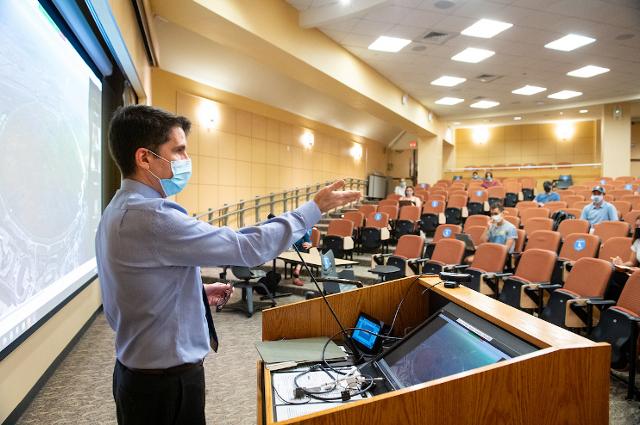-
About
-
Academics
- Physician Assistant
- Special Master’s (MBS)
-
Admissions & Financial Aid
- Tuition & Fees
-
Student Life
-
Research
- Research Labs & Centers
-
Local & Global Engagement
- Global Health Program
In 2020, All Hands Were on Board at Tufts Responding to the Pandemic
As COVID-19 changed the world, the university pivoted quickly to keep students learning and everyone safe

If the spring semester of 2020 was a sprint in the face of COVID-19, the rest of the year was a marathon—or maybe a triathlon, as Tufts responded to a global pandemic unparalleled in recent history.
In March, Tufts quickly brought coursework online, closed residence halls, paused most laboratory research, and halted non-emergency clinical services. The challenges mounted as the pandemic’s duration and severity became clearer.
The toughest thing about the pandemic has been its sheer volume, said Vice President and Chief Information Officer Chris Sedore. “It touched every corner of the university, from facilities to health services, faculty, students, labs—everything.” Getting it right would be “a huge lift,” he said.
As the calendar year wound down, there was widespread agreement that Tufts had, by and large, gotten it right. A Herculean effort involving administrators, faculty, students, and community partners enabled Tufts to continue to be an educator, researcher, and engaged citizen while safeguarding the health of its own community and its neighbors.
Among the biggest unknowns was the pandemic’s economic effect. “We had to try to project the likely impact on enrollment, student services, veterinary and dental clinics, and other operations across our campuses, as well the cost of health and safety measures like testing and masks,” said Vice President for Finance and Treasurer James Hurley. “In addition to serving our own students and employees, we wanted to help the local community.”
Thanks to, in Hurley’s words, the “transparency, engagement, and helpfulness” of colleagues across the university, as well as the finance team’s efforts, Tufts successfully balanced its budget. This required sometimes painful belt-tightening, but avoided large-scale personnel cuts, reductions in benefits, or other severe measures experienced elsewhere. Hurley is proud that Tufts was able to maintain its favorable S&P bond rating, which provides access to capital needed to support key projects.
Two things were never in doubt: Decisions would be based on science, and Tufts would be transparent about its plans, protocols, and progress. Underpinning Tufts’ pandemic-management strategy, said Michael Jordan, A94, M98, the university’s first infection control health director, was a set of early warning indicators for preparedness and prevention and associated performance targets to assess the virus’s prevalence on campus and the university’s success in mitigating its transmission.
Developed over the summer, they served as a decision-making roadmap. “We have data specific for each campus and school. Our flexibility to adapt as the data inform us has been one of our greatest strengths,” said Jordan.